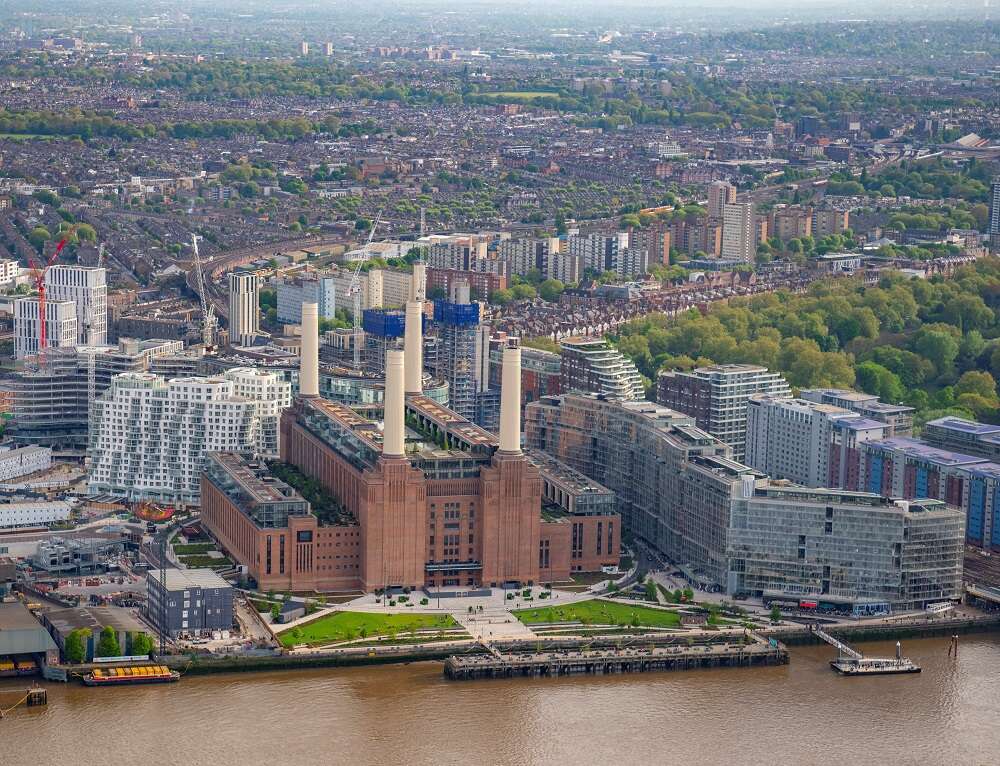
By Sachin Ravikumar
LONDON (Reuters) – London’s Battersea Power Station reopens next week as a glitzy hub of offices, flats, restaurants and shops after decades of failed attempts to reinvigorate one of the capital’s most iconic buildings, often described as the “Everest of real estate”.
The 1930s power station once supplied a fifth of London’s electricity, including to Buckingham Palace and parliament, but is better known for featuring alongside a floating inflatable pig on the cover of Pink Floyd’s 1977 album “Animals”.
The colossal brick building earned its reputation as one of London real estate’s toughest challenges after a series of false starts, including an attempt to recreate it as a theme park.
Its 9-billion-pound ($10.2 billion) redevelopment, backed by a group of Malaysian investors, will see thousands of people living and working in and around the once-derelict station after its formal opening on Oct. 14.
Apple will become the largest office tenant, occupying six floors in the former central boiler house of the power station, known for its four white chimneys that dominate the skyline over the south bank of the River Thames.
About 96% of the commercial space has been filled up, Battersea Power Station Development Company boss Simon Murphy told reporters on Tuesday.
“It has taken a lot of hard work, determination, and the continued commitment of the Malaysian shareholders over the past ten years to bring Battersea Power Station back to its former glory,” Murphy said, noting the cost of restoring the station was 2 million pounds per day at its peak.
The Battersea project, spread over an area the size of 32 soccer fields, got a major boost from the opening last year of a London Tube station a two-minute walk away, partly funded by the development company.
“Without the Tube, we wouldn’t have brought our office occupiers, we wouldn’t have brought the retailers,” Murphy said. “Neither project could survive without the other.”
The coal-fired power station was shut down completely in 1983.
Its redevelopment will see more than 250 apartments starting at 865,000 pounds apiece around the power station, in addition to commercial space that should bring in 100 million pounds of rent annually, Murphy said.
The project will also bring dozens of retailers including Zara, Hugo Boss and Ralph Lauren, besides restaurants including a 1950s-themed bar at the site of the station’s Control Room B, replete with now-defunct mechanical switches and dials.
Indeed, much of the project has focused on retaining an industrial flavour, from its exposed brick walls and a large, rusty crane left hanging in the central hall, to escalators with transparent side panels displaying their inner machinery.
For views of London’s skyline, visitors will be able to take a lift 109 metres up to the top of one of the chimneys, rebuilt over three years with 25,000 wheelbarrows of hand-poured concrete to match original design specifications.
“We want to make sure that people, when they come inside the building, they realise that this was a power station and don’t think is a brand new building,” said Sebastian Ricard, one of the architects involved in the redevelopment.
($1 = 0.8818 pounds)
(Reporting by Sachin Ravikumar; Editing by David Gregorio)


